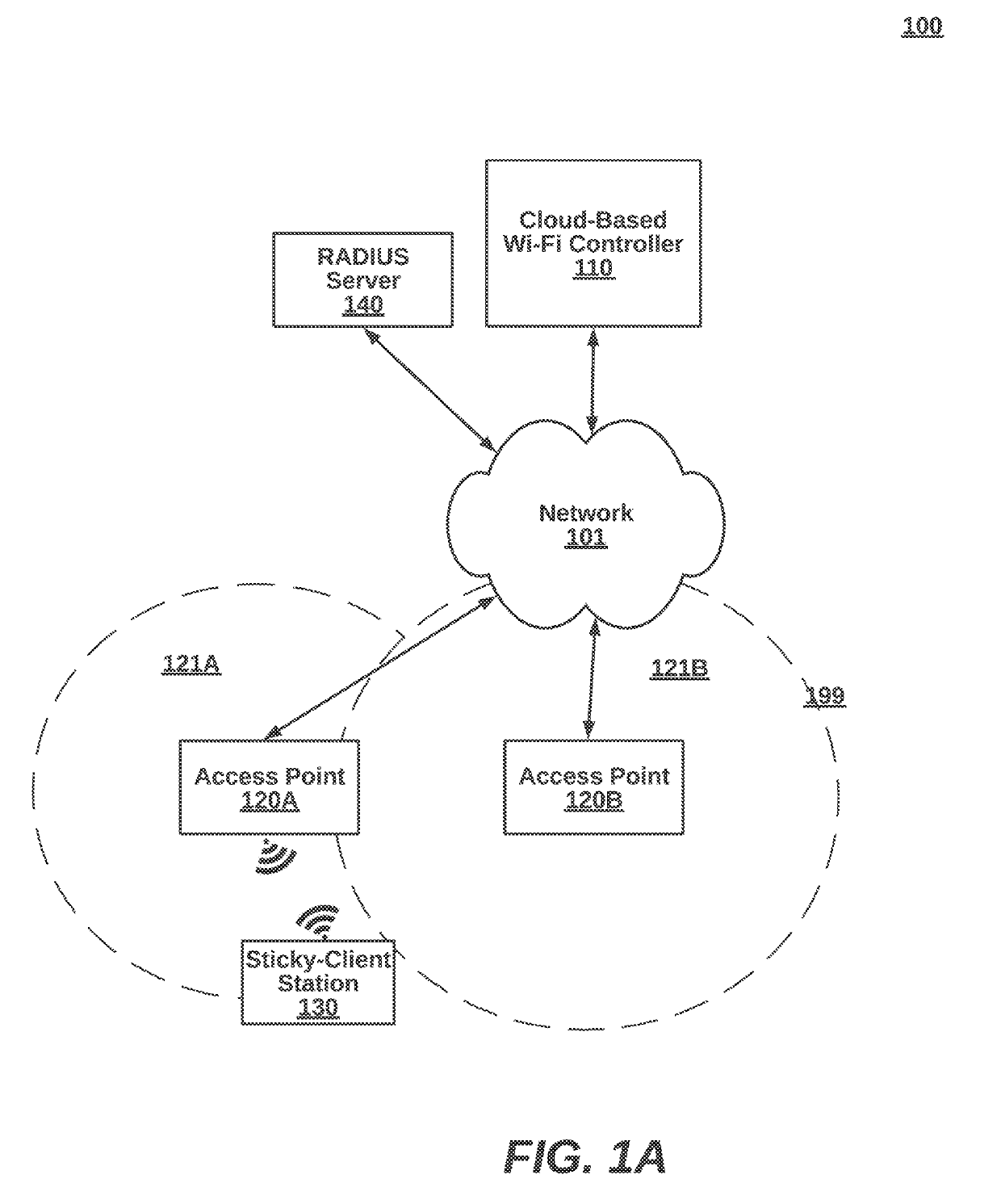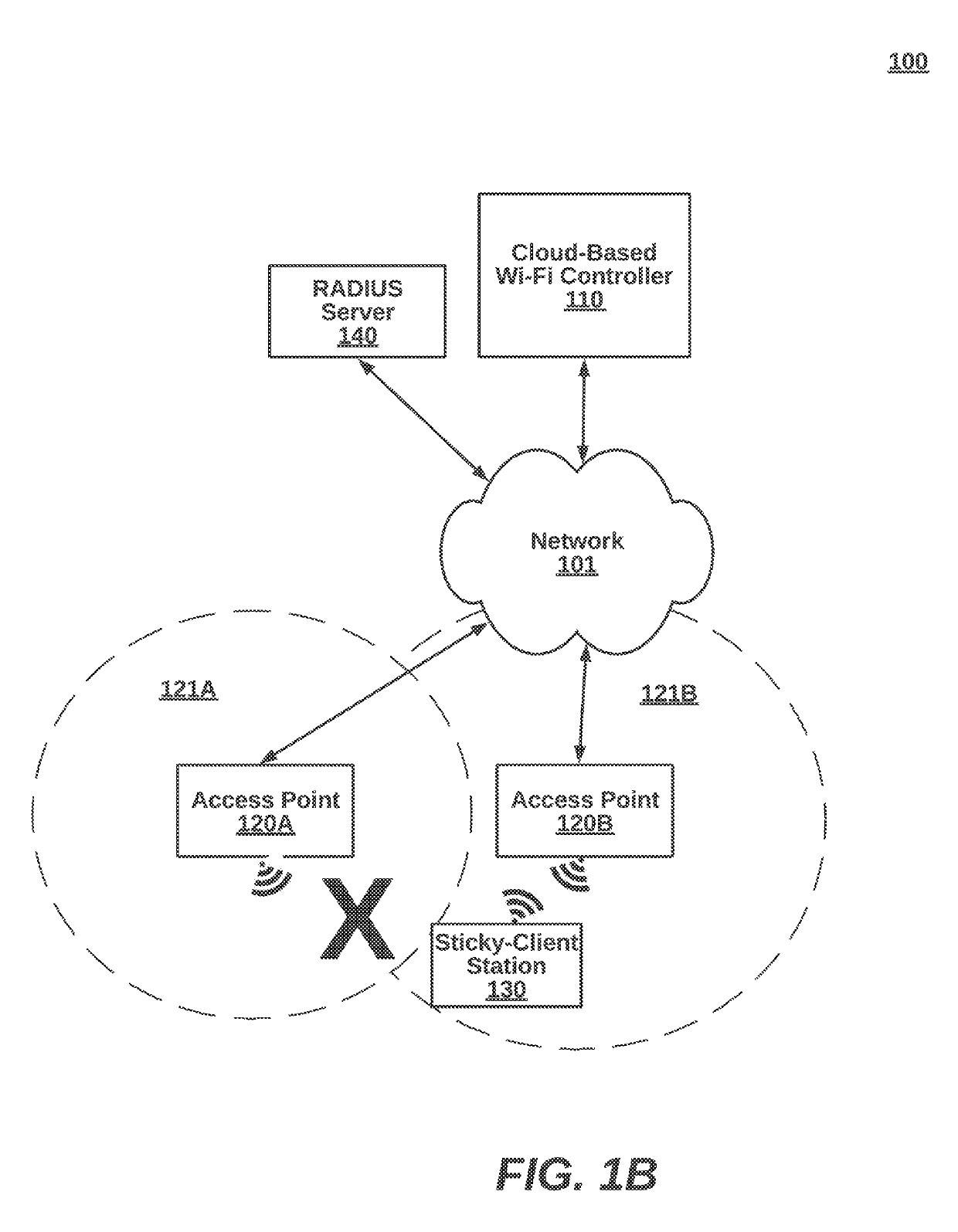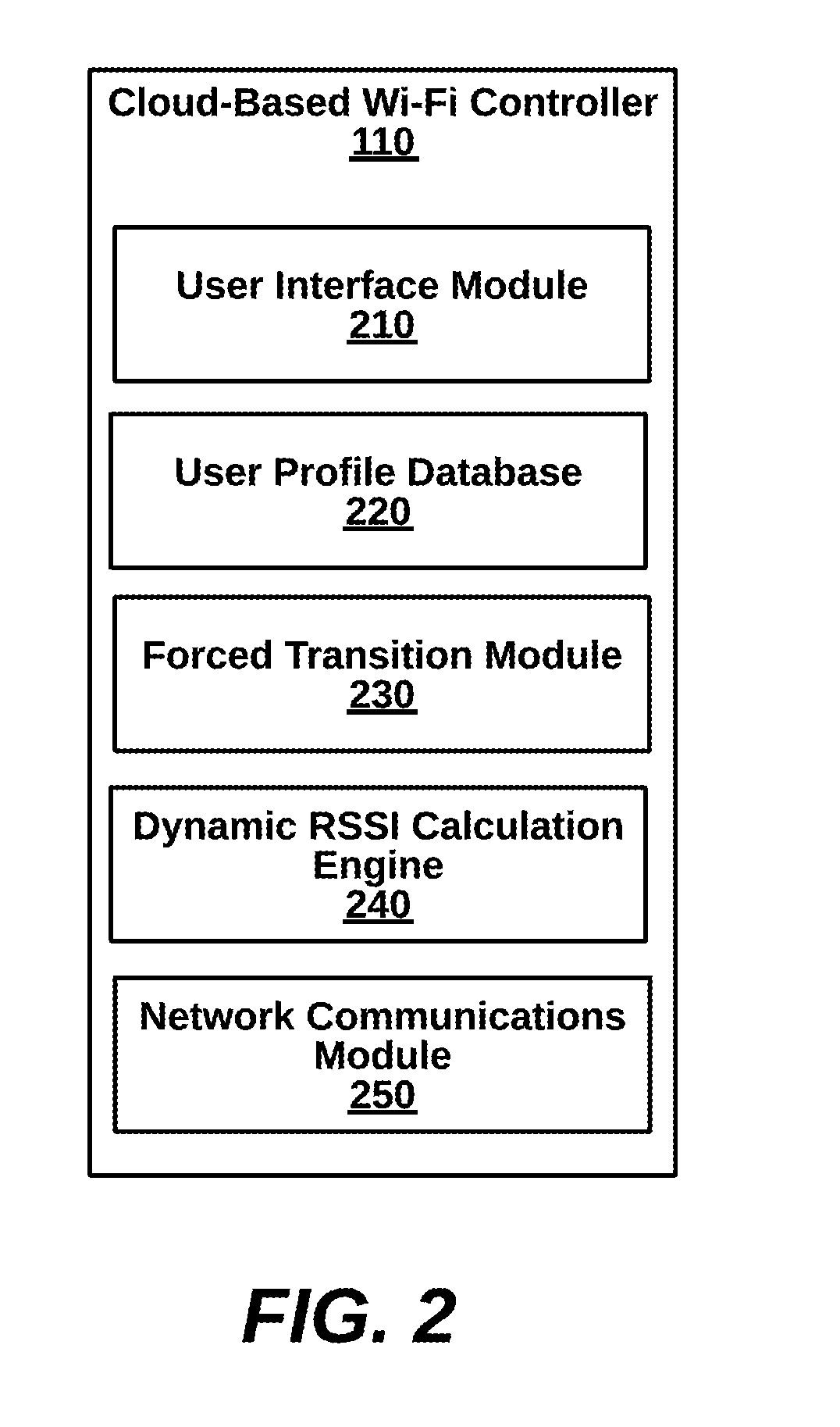Controlling transitions between access points with dynamic RSSI (received signal strength indicator) thresholds for sticky-client stations of cloud-controlled wi-fi networks
- Summary
- Abstract
- Description
- Claims
- Application Information
AI Technical Summary
Benefits of technology
Problems solved by technology
Method used
Image
Examples
Embodiment Construction
[0020]Methods, (non-transitory) computer program products, and systems for forcing transitions between access points with dynamic RSSI thresholds for sticky-client stations of cloud-controlled Wi-Fi networks, as described herein. One of ordinary skill in the art will recognize variations to the disclosed embodiments that are contemplated, although not explicitly described.
[0021]I. Systems for Forced Transitions of Sticky-Client Stations (FIGS. 1-5)
[0022]FIG. 1A is a high-level block diagram illustrating a system 100 for forcing transitions between access points with dynamic RSSI thresholds for sticky-client stations of cloud-controlled Wi-Fi networks, according to an embodiment. FIG. 1B shows the system 100 after a forced hand-off according to the techniques described herein.
[0023]The system 100 comprises a cloud-based Wi-Fi controller 110, access points 120A,B, a wireless station 130, and RADIUS server 140. In other embodiments of the system 100, additional network components can a...
PUM
 Login to View More
Login to View More Abstract
Description
Claims
Application Information
 Login to View More
Login to View More - R&D
- Intellectual Property
- Life Sciences
- Materials
- Tech Scout
- Unparalleled Data Quality
- Higher Quality Content
- 60% Fewer Hallucinations
Browse by: Latest US Patents, China's latest patents, Technical Efficacy Thesaurus, Application Domain, Technology Topic, Popular Technical Reports.
© 2025 PatSnap. All rights reserved.Legal|Privacy policy|Modern Slavery Act Transparency Statement|Sitemap|About US| Contact US: help@patsnap.com



